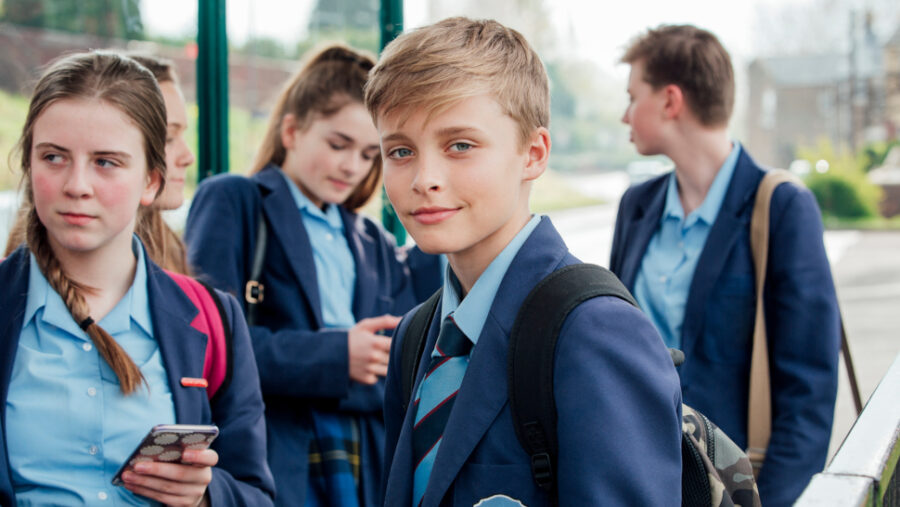
Department for Education publishes Working Together to Safeguard Children 2023
18th January 2024

In September we reported on The Department for Education’s (DfE) consultation on the proposed changes to the Working Together to Safeguard Children (WT) statutory guidance.
The WT guidance outlines how practitioners working with children, young people and families should work together in order to ensure that children and young people remain safe from harm.
On the 15 December 2023 the DfE published the updated version of the statutory guidance. The updates to the guidance focus on strengthening multi-agency working across the whole system of help, support and protection for children and their families and keeping a child-centred approach while bringing a whole-family focus.
We consider some of the updates schools should be aware of below.
Chapter 1: A shared responsibility
A chapter has been added which brings together new and existing guidance to emphasise the importance of strong multi-agency partnerships across the whole system of help, support and protection, including effective work from all agencies, parents, carers and families.
Chapter 1 explains the importance of a child-centred approach within a whole family focus. With this in mind all practitioners should work in partnership with parents and carers as far as possible. It emphasises the four key principles that underpin work with parents and carers including:
- Effective working partnerships with parents and carers by practitioners to build strong, positive, trusting and co-operative relationships
- Communication should be respectful, non-blaming, inclusive and adapted to parents and carers needs
- Practitioners empowering parents and carers to participate in decision-making to help, support and protect children
- Practitioners should involve parents, carers, families and local communities in designing processes that affect them, including those focused on safeguarding children.
The guidance goes into further detail regarding how these principles can be achieved and the expectations for multi-agency working which we recommend schools review and become familiar with.
Chapter 2: Multi-agency safeguarding arrangements
Substantive changes have been made regarding multi-agency safeguarding arrangements in order to strengthen how they work to safeguard and protect children locally, including with relevant agencies.
The main changes within this section include:
- Clarifying the roles and responsibilities of safeguarding partners
- Distinguishing between Lead Safeguarding Partners and Delegating Safeguarding Partners
- Introducing a partnership chair role
- Emphasising the role of education in safeguarding arrangements
- Strengthening accountability by clarifying expectations for information sharing, independent scrutiny, funding and reporting.
No statutory roles or functions have been removed from the guidance.
Additionally, more emphasis has been placed on the importance of considering naming and engaging voluntary, charity, social enterprise organisations and sports clubs in published local arrangements.
The changes emphasising the role of education in safeguarding arrangements within paragraphs 76 – 81 are key for schools to be aware of. The guidance states this role includes, but is not limited to, responding to safeguarding audits of quality and compliance, as requested by the local authority and/or local safeguarding partners.
Paragraph 79 emphasises the role of training for designated safeguarding leads/teachers to include shared understanding about the different levels of need and how to respond.
Chapter 3 – Providing help, support and protection
The changes to chapter 3 focus on three key areas: early help, safeguarding and promoting the welfare of children and child protection. This chapter now has a focus on how organisations and agencies can provide help, safeguarding and protection for children and their families.
- Early help is an important section for schools to consider as it strengthens the role of education and childcare settings in supporting children and keeping them safe, including information on a child’s right to education and risk factors to consider when identifying those who may benefit from early help
- In this section, the guidance goes into further detail around the role of education and childcare settings specifically in relation to children who may benefit from early help. As schools have daily contact with most children and families, they are best placed to identify concerns and address them early. The guidance emphasises the importance of safeguarding professionals working closely with schools to ensure information about children is shared effectively, risks of harm are correctly identified and understood, and children and families receive the services they need. Those working in schools also need to be aware of how children’s experiences may impact their mental health, behaviour, attendance and progress within a school setting.
- The section surrounding safeguarding and promoting the welfare of children clarifies that a broader range of practitioners can be the lead practitioner for children and families receiving support under section 17 of the Children Act 1989, and the requirements on local authorities and their partners to agree local governance arrangements. The changes also clarify the role of children’s social care in supporting disabled children and their families, children at risk of harm outside the home, children in mother and baby units and children at risk from people in prison and people supervised by the probation service
- The child protection section introduces new multi-agency child protection standards which sets out actions, considerations and behaviour for improved child protection practice and outcomes for children. It also clarifies the multi-agency response to all forms of abuse and exploitation from outside the home and includes resources to support practitioners’ understanding of the response to online harm.
Chapter 4: Organisational responsibilities
Throughout this chapter changes have been made to the prison and probation sections by highlighting the mutual benefits of exchanging information with children’s social care to strengthen child safeguarding.
Chapter 5: Learning from serious safeguarding incidents
This chapter now clarifies the expectation to keep in touch with care leavers over the age of 21, and the non-mandatory reporting of care leaver deaths up to the age of 25 to improve learning and outcomes for this group of young people.
Additionally, the guidance sets out the process for submitting serious incident notifications and the importance of accuracy to support data, reporting and learning.
Chapter 6: Child death reviews
There have been factual changes throughout this chapter including but not limited to:
- Replacing reference Child Death Overview Panel (CDOP) framework with Child Death Review Statutory and Operational Guidance (2018)
- Modifications to the language around the responsibility of professionals where relevant, to inform relevant safeguarding partners and the Child Safeguarding Practice Review Panel.
Actions for schools
In light of the WT guidance update schools should review their current child protection and safeguarding policies, procedures and training arrangements to ensure they are up to date and reflect the changes.
Schools may wish to consider seeking guidance and advice from their legal advisors when updating any policies to ensure they accurately reflect the updated guidance. For ISBA members, the Model Child Protection and Safeguarding Policy is in the process of being updated and will shortly be available in the reference library.










